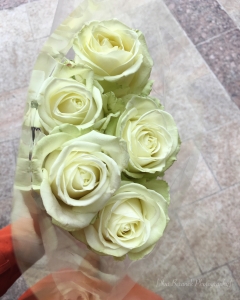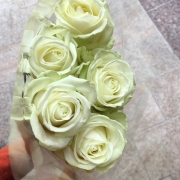Gratitude as a Lenten practice

“In 12 years of research, I have never interviewed a single person with the capacity to really experience joy who does not also actively practice gratitude.”
Brené Brown
Practicing gratitude is simple. It does not requite any special skill, like riding a bicycle for example would. We can write our gratitude notes in a journal or on small pieces of paper that we put into a jar (“a gratitude jar”). While the practice is simple, it is good to be reminded of the value of gratitude.
Research has shown that gratitude can improve both mental and physical health, and “not surprisingly, grateful people are also more likely to take care of their health”.* A number of studies revealed other benefits, such as improvement in self-esteem, better sleep, reduced stress and even a help in overcoming trauma.
I have been writing a gratitude journal for a few years now. When I read through it I notice I am often grateful for small things. Or maybe better to say ordinary things, like sunshine, a fox in my garden, hot water – hot water features quite regularly in my gratitude notes. Green grass, a conversation with a friend, a pressed Autumn leaf in my notebook, especially since I found it at the beginning of Spring.
In “One thousand gifts”, Ann Voskamp describes her practice of writing one thousand gratitude notes into a journal. This practice gradually transformed her. When she was young, something tragic happened in her family and it marked the rest of her life. As a grown up woman, she had lovely six children, a husband, they lived on a farm, but her daily living was marked with anxiety and worry. Until she started to write the gratitude notes in her journal. She started noticing that her days were filled with beauty. Interestingly, a lot of the things she wrote about were also every-day and simple.
“243. Clean sheets smelling like wind
244. Hot oatmeal tasting like home
245. Bare toes in early light”
[Ann Voskamp, “One thousand gifts”, p. 55]
We have just started our Lenten journey. Lent is a time where we reflect on Jesus’ time in the desert. We journey with Jesus towards His final days on earth, His death and resurrection. I have never been in an actual desert, but I am sure that even there we can find things to be grateful for. Some deserts bloom with flowers during certain seasons.
There can be an oasis in the desert, and it must feel almost like a little miracle to come across one. Perhaps those who travel in the desert become aware of the essentials they need. We can be grateful for company, water, food, a shelter for the night. Even if we are not going to go physically into the desert, we can experience that life sometimes provides ‘desert-experiences’. During the difficult times, too, we can practice gratitude, and it may help to ground us into the experience of God’s goodness.
In Lent, at least liturgically, we don’t sing Alleluia, which is exclamation of relief and ultimate victory. But the prayers are still filled with praises to God. Those praises, as well as noticing gifts of each day, are a bit like new buds on the trees as Spring is gradually bursting into bloom. The more blossoms we notice, the more grateful we feel.
If we take gratitude as our Lenten practice, noticing goodness in life will guide us from the praises of God’s goodness towards the Easter Alleluia. We might even notice that some of the desert places within us bloomed as we did that.
Iva Beranek
Dr Iva Beranek is the Ministry Facilitator for the CMH: Ireland

